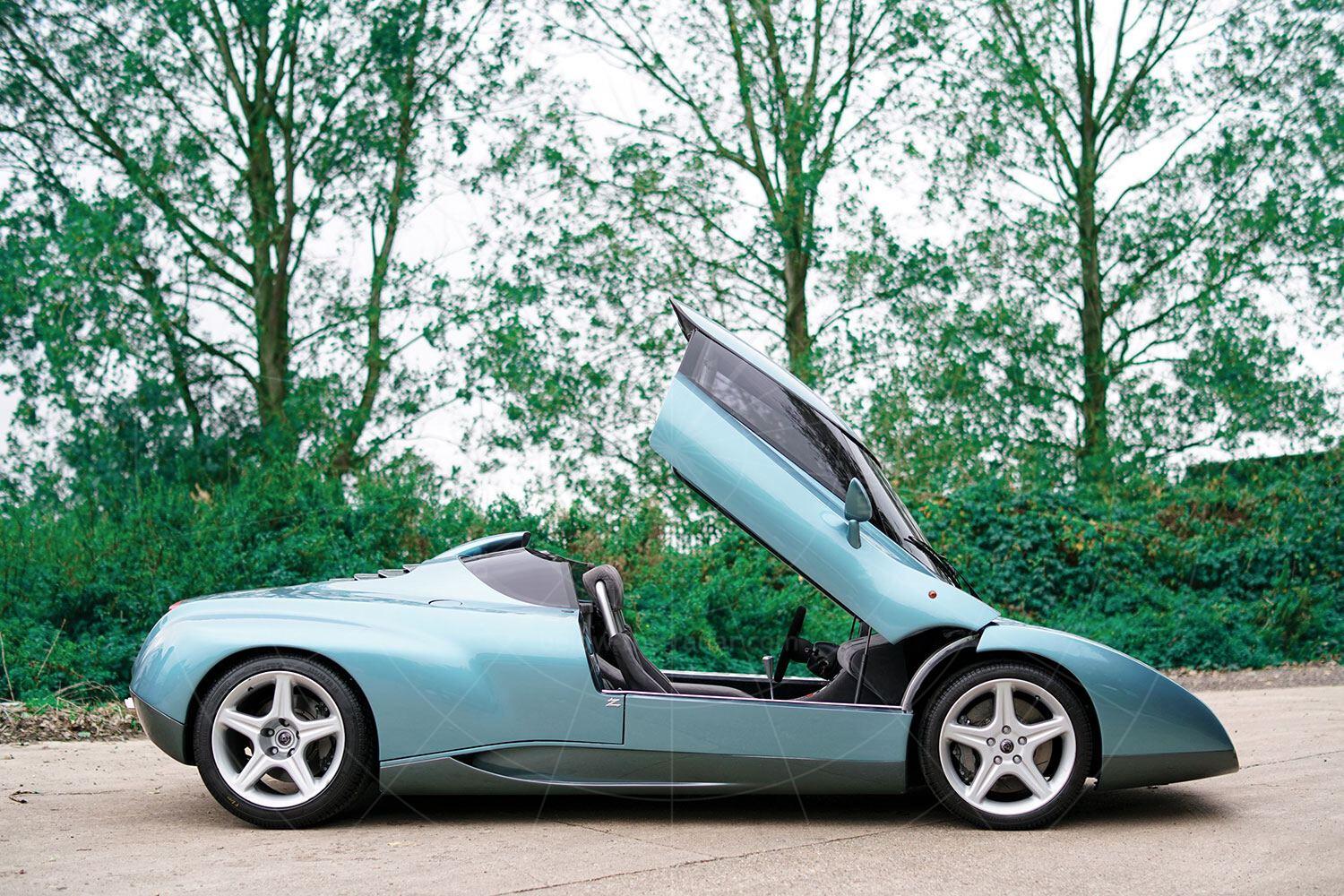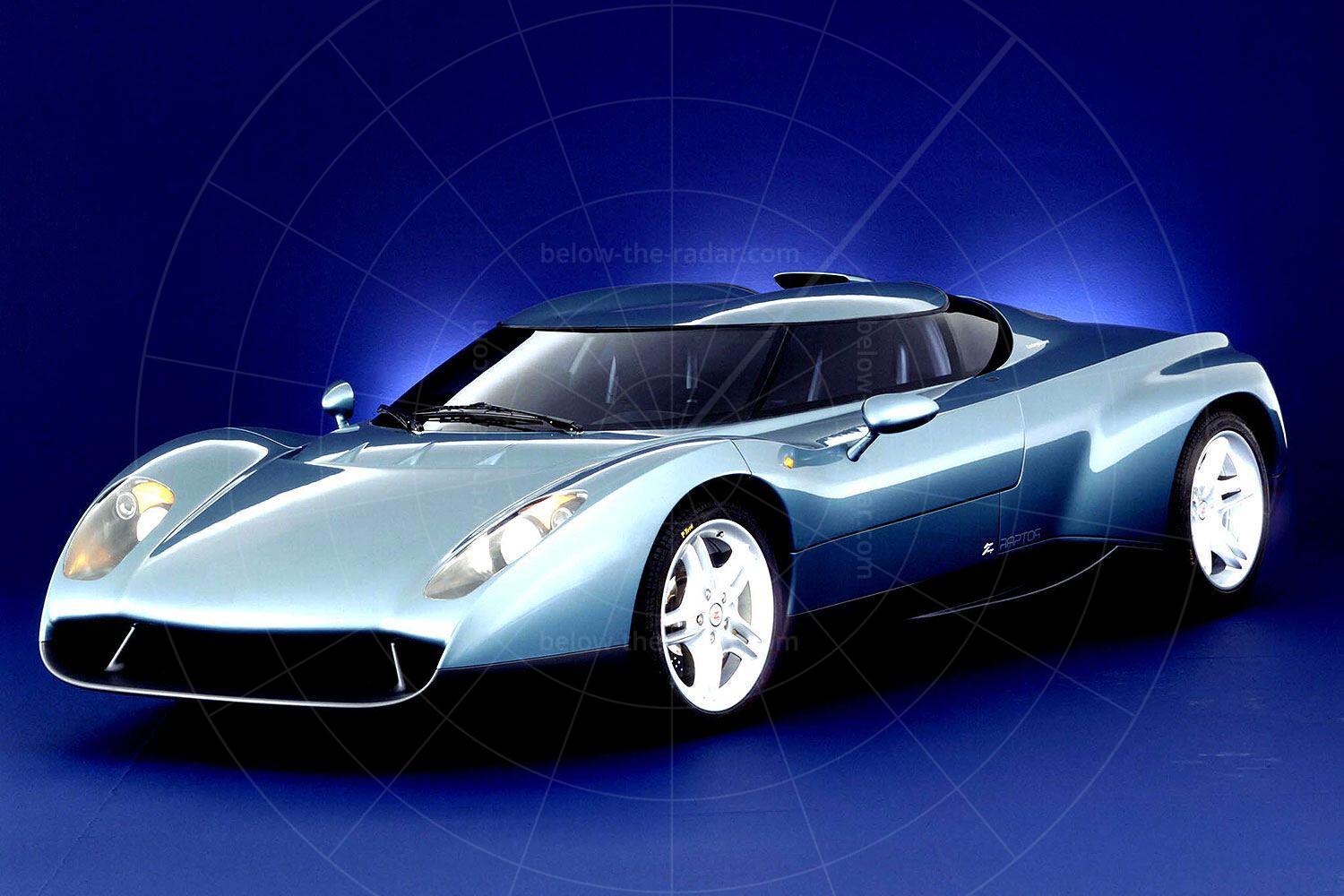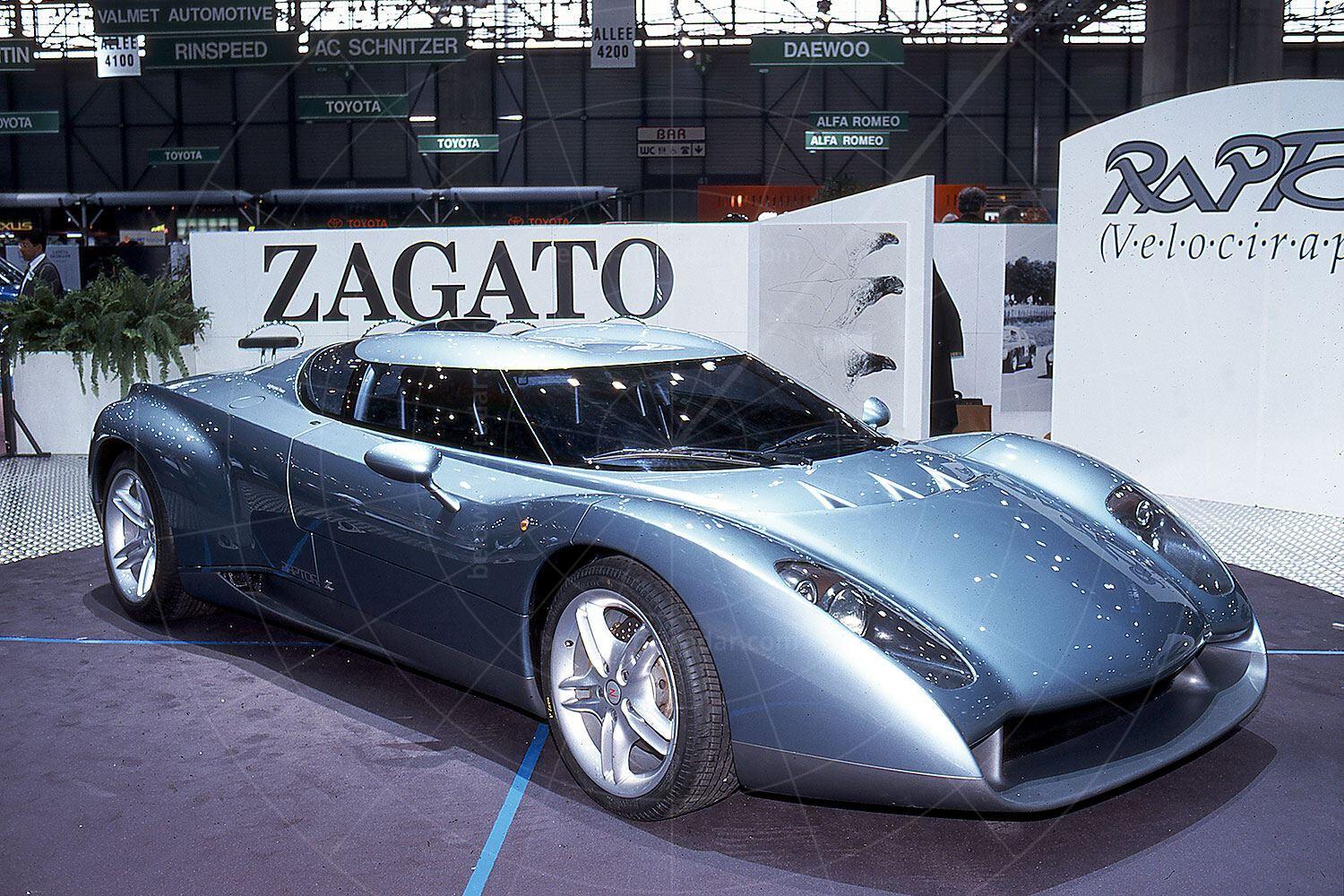You’d think that it would be pretty difficult trying to build a car that was even more dramatic than the Lamborghini Diablo, but when Italian styling house Zagato was approached by bobsleigh champion Alain Wicki, that was exactly what it was asked to do. Wicki was used to travelling at 100mph just inches from the ground, so to find anything that could give such a sensation of speed on the road it had to be Italian, extremely powerful, and preferably hand-built.
The result was the Raptor, a concept based on the four-wheel drive Lamborghini Diablo VT, and which it was hoped would be the car to revive Zagato’s flagging fortunes. If this car received the right response when it was unveiled at the 1996 Geneva motor show, Zagato would offer it in limited production form to a small number of wealthy enthusiasts. The aim was to use the Raptor as a showcase for Zagato’s computer-aided design and manufacturing facilities, and it would also provide Lamborghini with an extra model for its range. The thinking was that Lamborghini would manufacture the Raptor in its factory in Sant'Agata.
Considering the project was only thought of in the summer of 1995, it was an impressive feat to have a fully running prototype built by March 1996; work on the chassis was started only four months earlier. Having a working platform on which to build the car was a great help; the engine, transmission, suspension and steering were all used in their ‘natural’ form. That meant there was a healthy 492bhp on tap, and although no top speed performance testing was performed on the car, it was reckoned 200mph should have been achievable. This was aided by a reduction in kerb weight over the Diablo, to just 1350kg, although the fact that there was no roof wouldn’t have done it any favours aerodynamically. But because the Raptor was planned as a production-ready concept, a closed coupé version was also designed, although this never got off the drawing board.
In true Italian supercar fashion, the wedge-shaped profile of the Raptor had a cab-forward stance with the occupants sitting quite far forward so the engine was closer to the middle of the car, to improve handling. To improve aerodynamics there were no pop-up headlamps; instead the lights were housed behind plexiglass fairings. The double-bubble fairings behind the two occupants echoed the classic Zagato twin-bubble roof signature, while the rear was exceptionally clean thanks to the single wide light in place of the more usual pair of multi-coloured lamp clusters.
The five-spoke alloy wheels for the Raptor were built specially, just like the brakes. Although the Diablo has pretty strong brakes, they were the one thing that the team at Zagato didn’t feel were up to the required level. As a result, a bespoke British Alcon racing system was fitted to make sure that the Raptor could be hauled down from really high speeds, time and time again.
Inside the Raptor everything was trimmed in grey Alcantara, which coated the wide centre console, seats and fascia. Apart from a digital display in front of the driver there wasn’t any instrumentation on the dash, while on the centre console there was just a single gauge, joined by a few switches grouped together. A thick Momo steering wheel carried the Zagato logo in its centre and there was an aluminium-topped gearlever sitting in an alloy H-gate – and that was it.
When the car made its debut it was greeted enthusiastically by the press and public alike. By the time the show closed there were 550 people who had expressed an interest in buying one, but as Lamborghini was going through major changes at the time the project faltered. In the end just the one fully driveable prototype was built. It was sold by RM Sotheby's in November 2019 for $1,086,250.
| Vital statistics | |
|---|---|
| Debut | Geneva 1996 |
| Designer | Norihiko Harada |
| Engine | Mid-mounted, 5707cc, V12 |
| Transmission | 5-speed manual, four-wheel drive |
| Power | 492bhp |
| Top speed | 200mph approx |

























